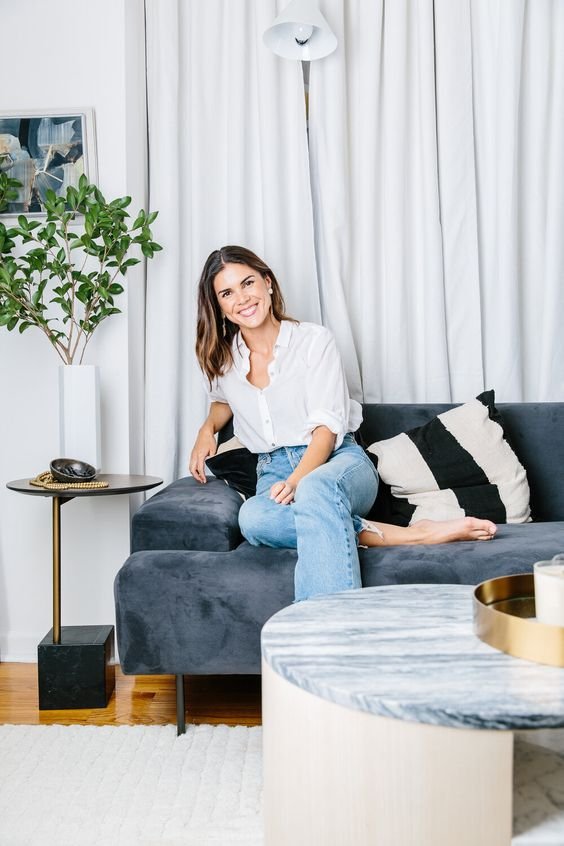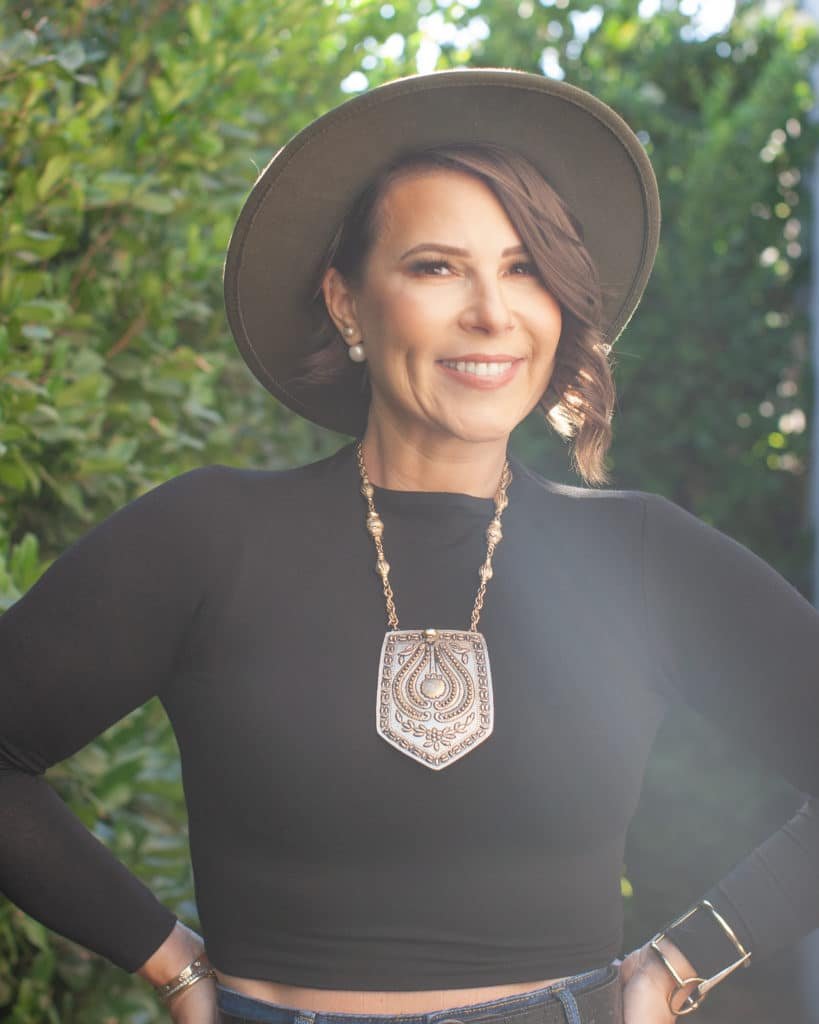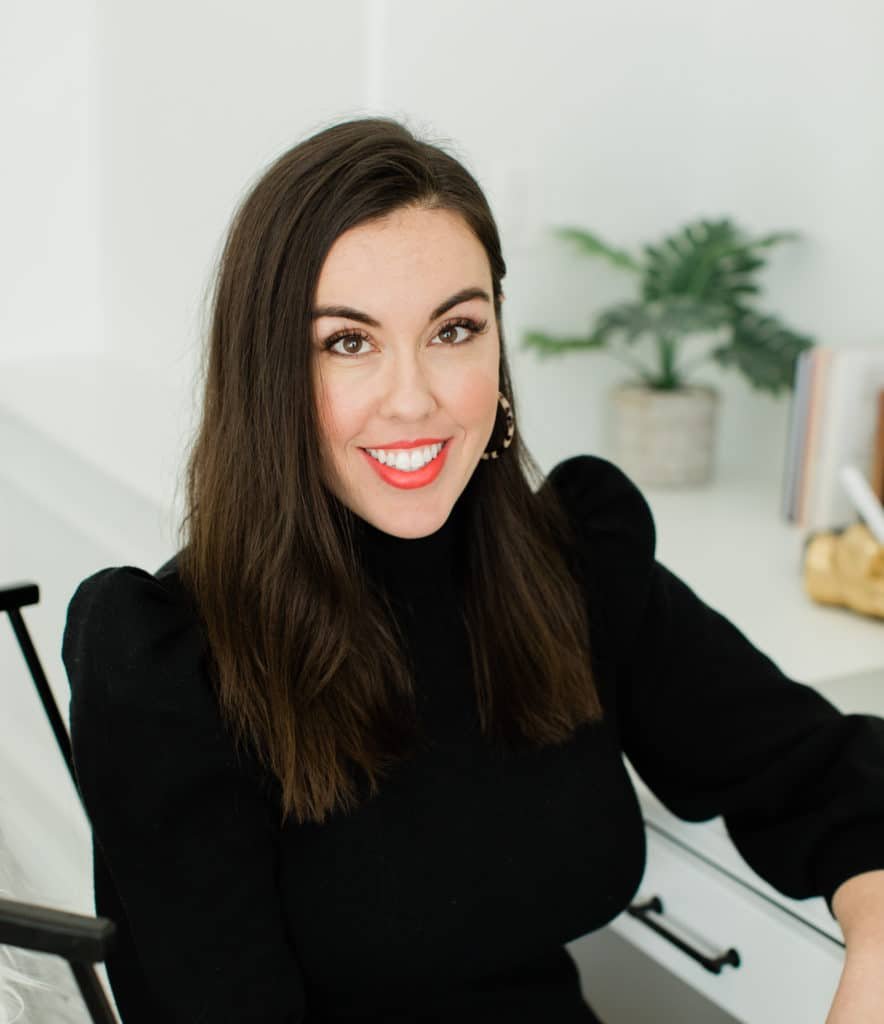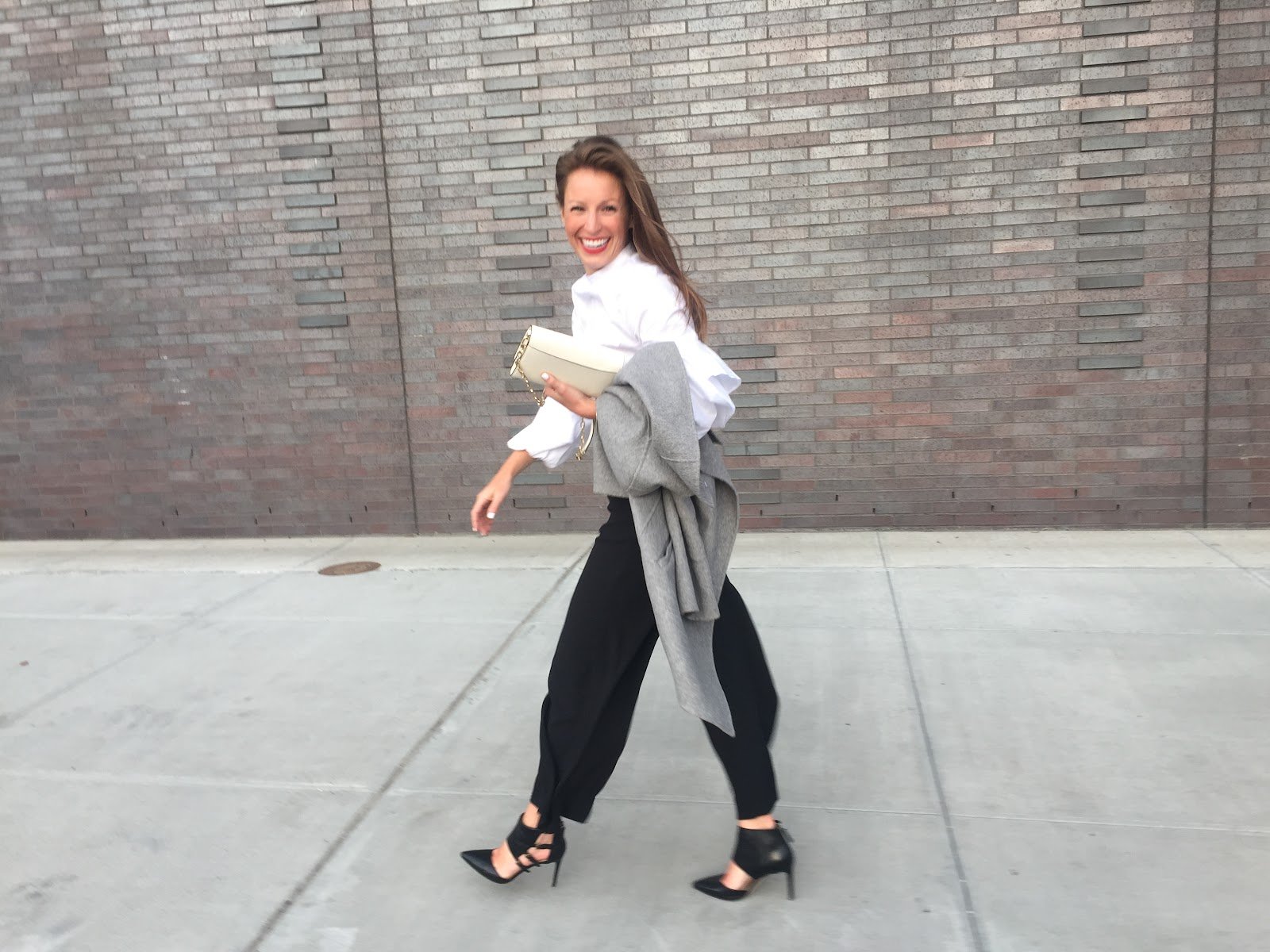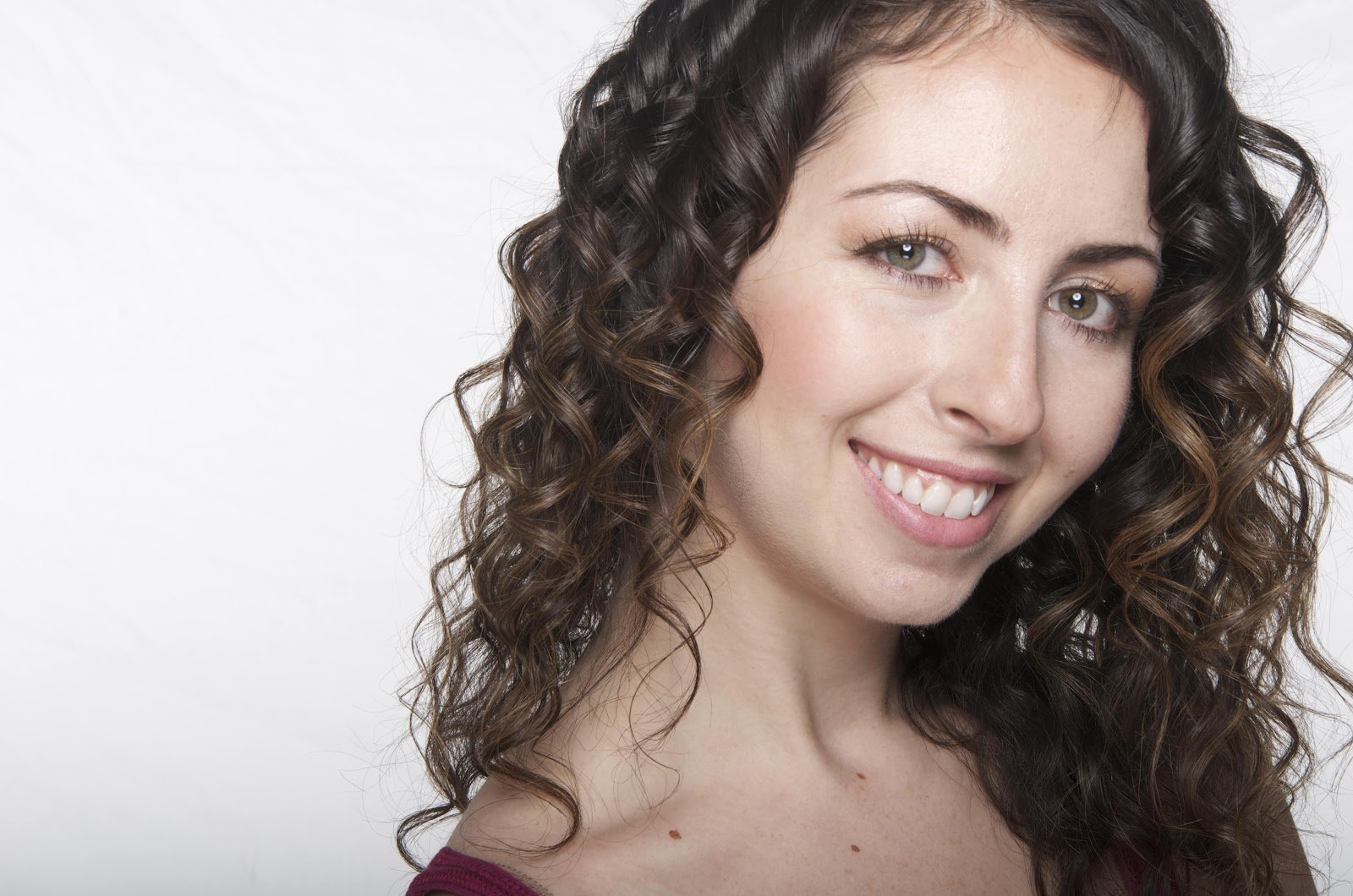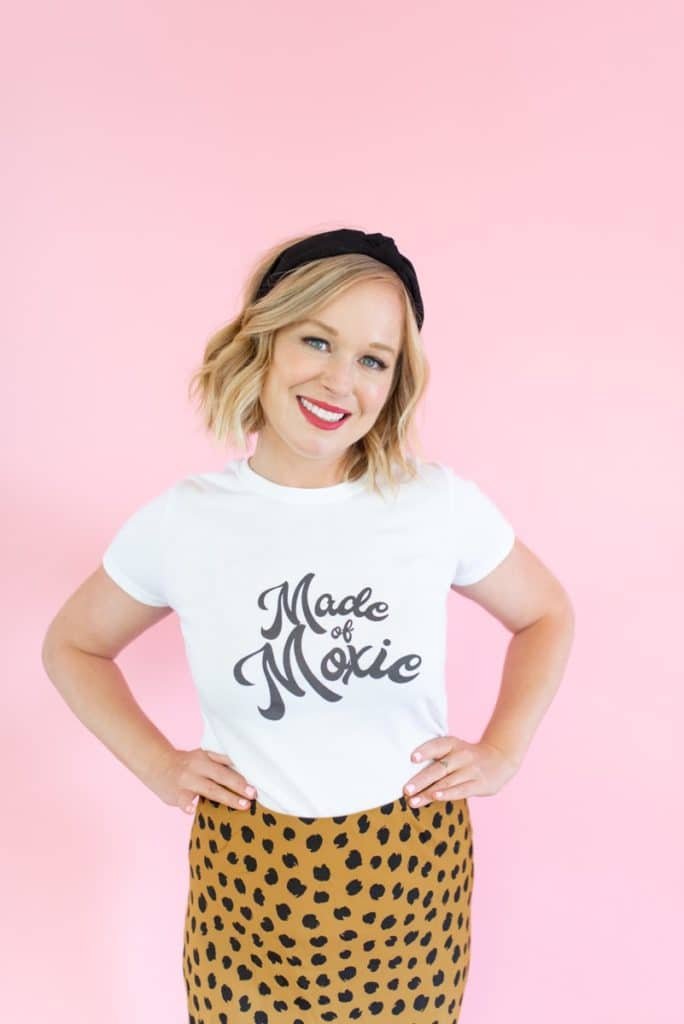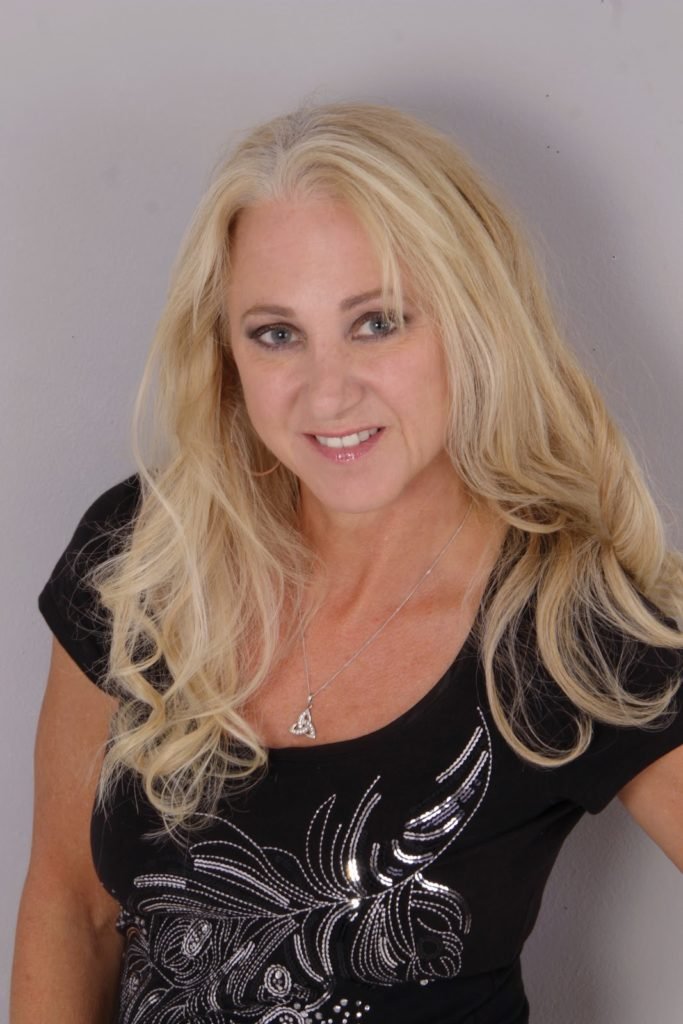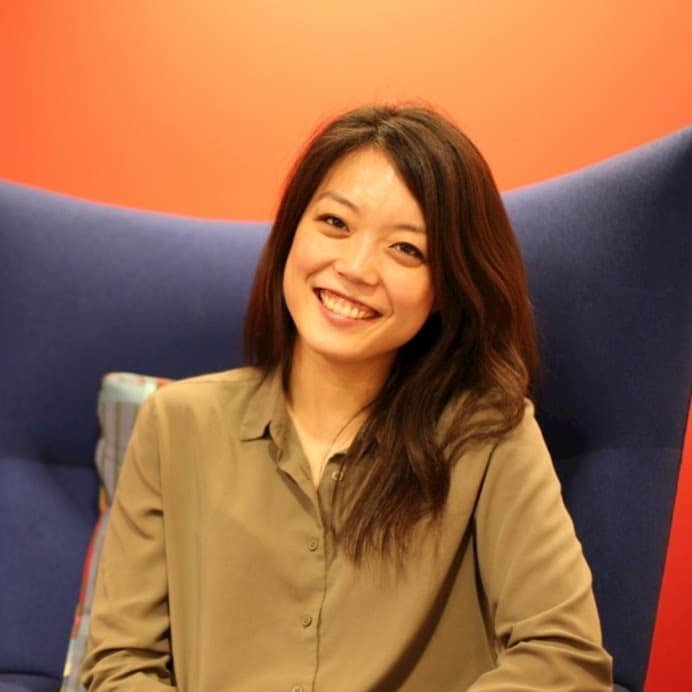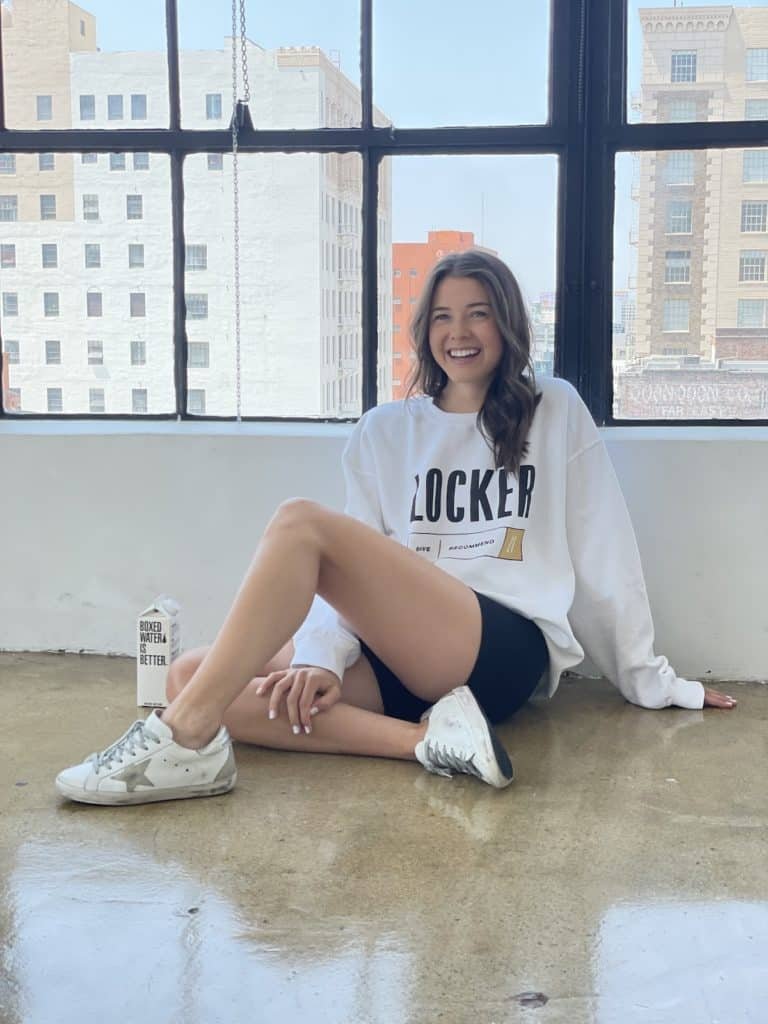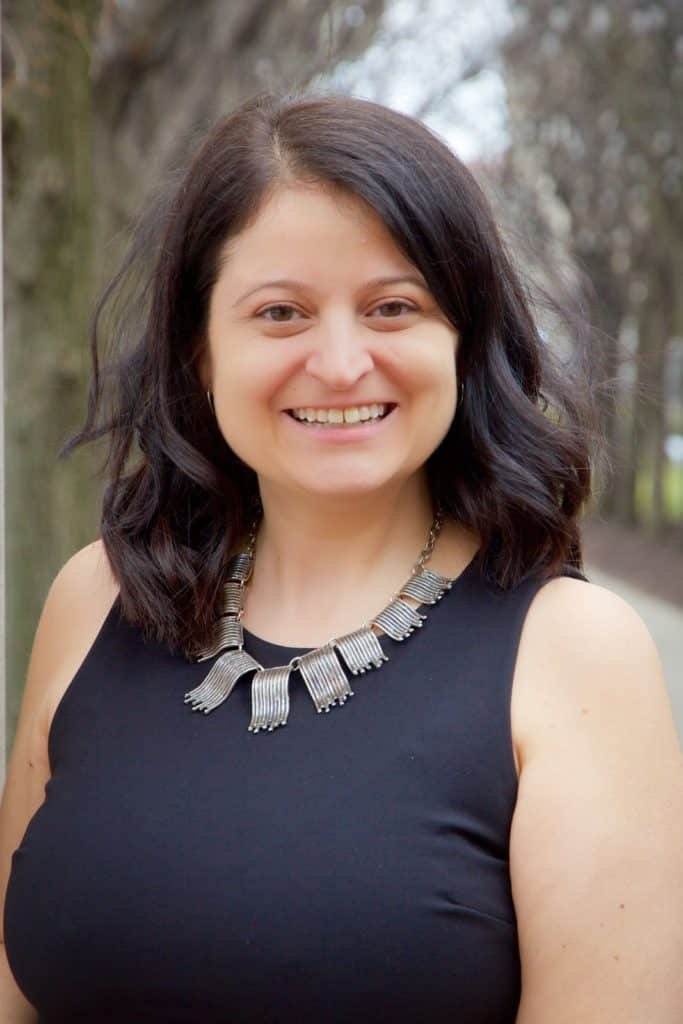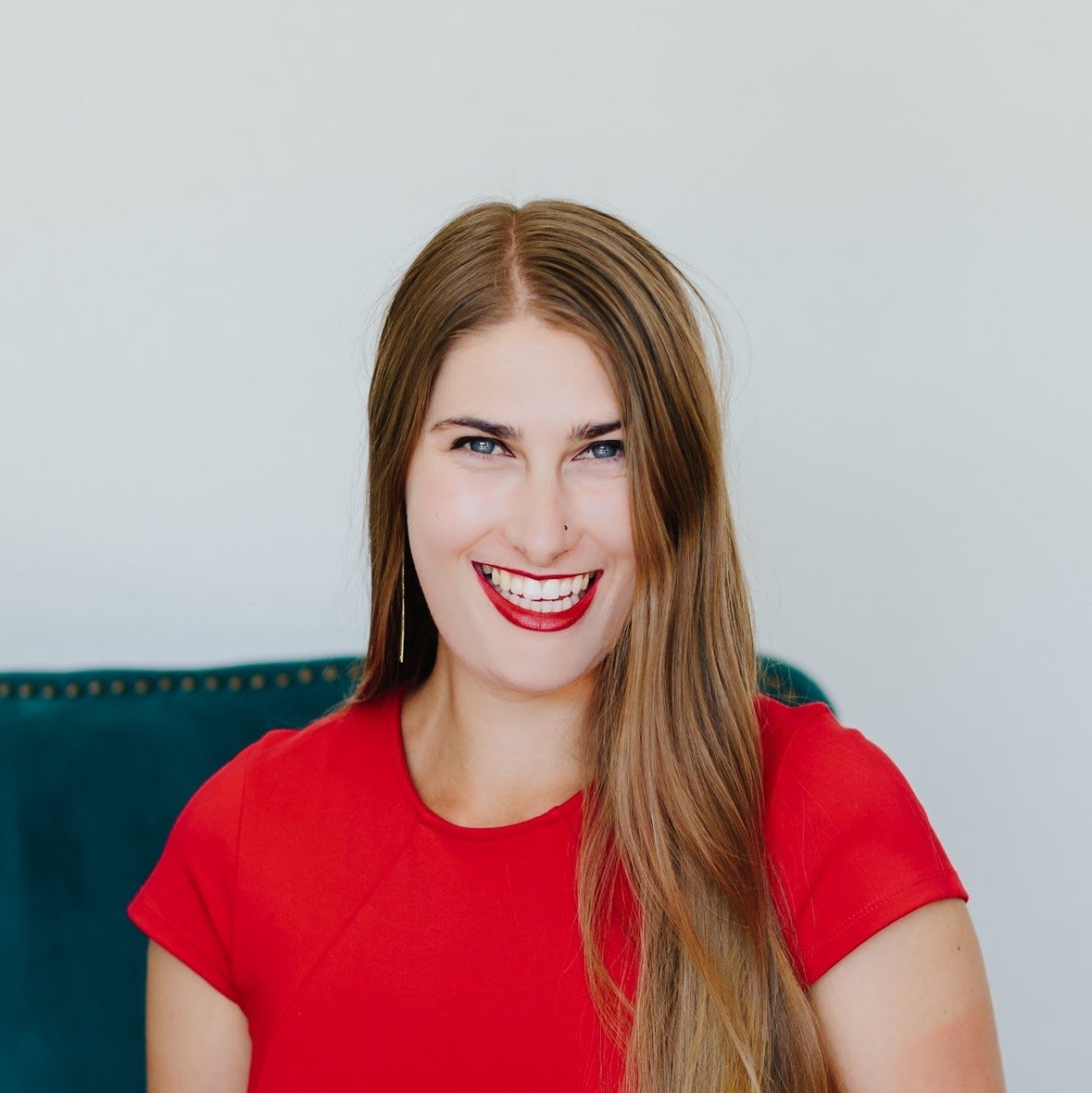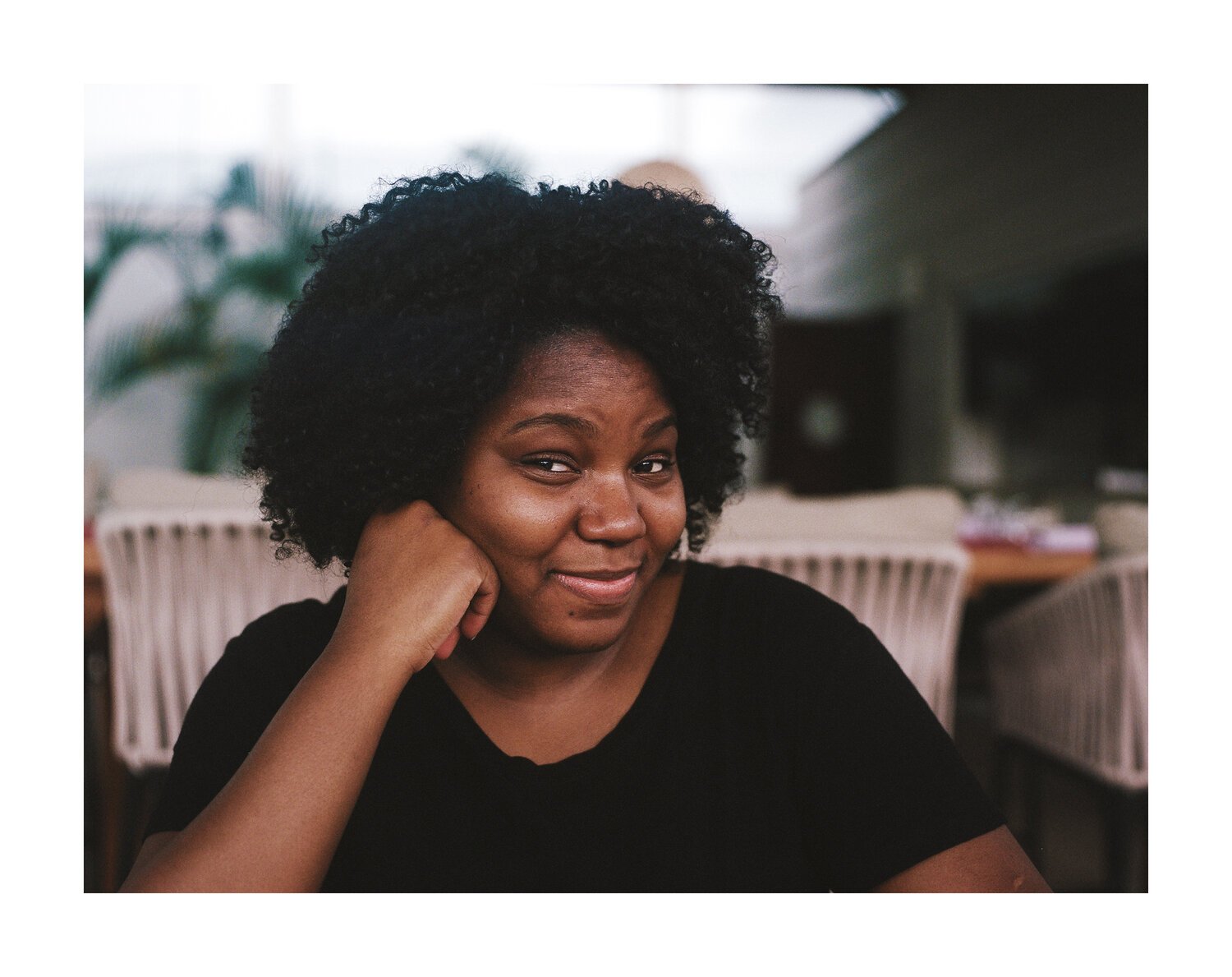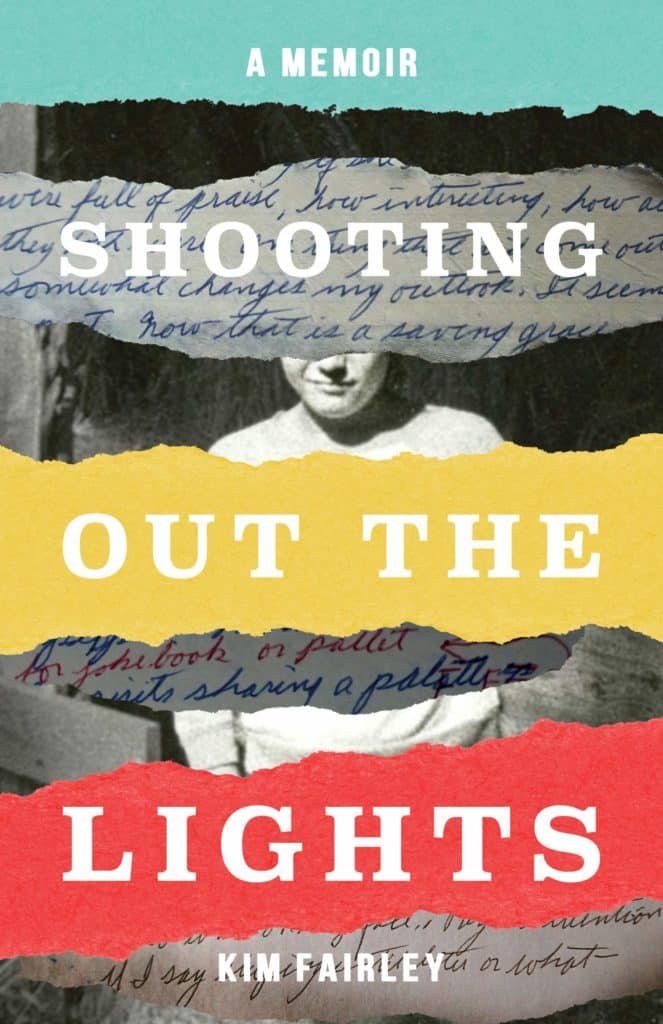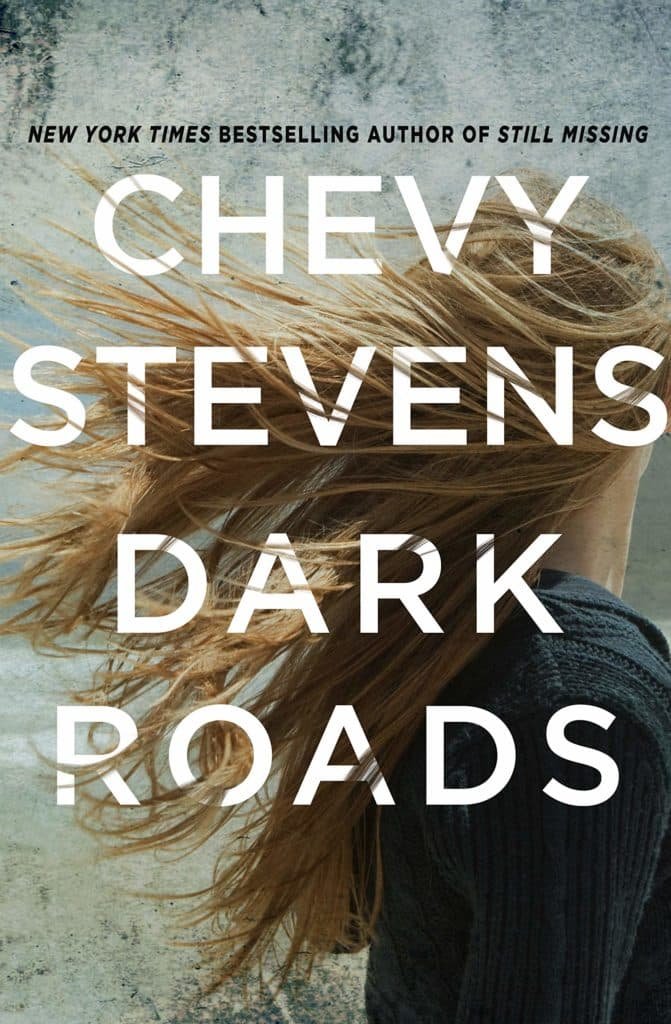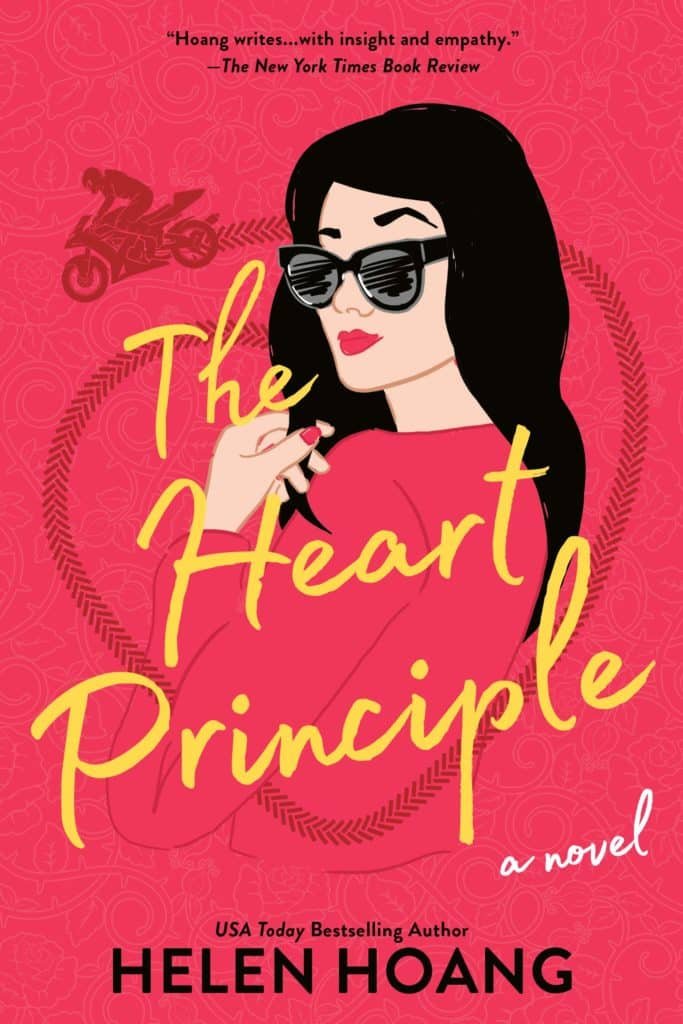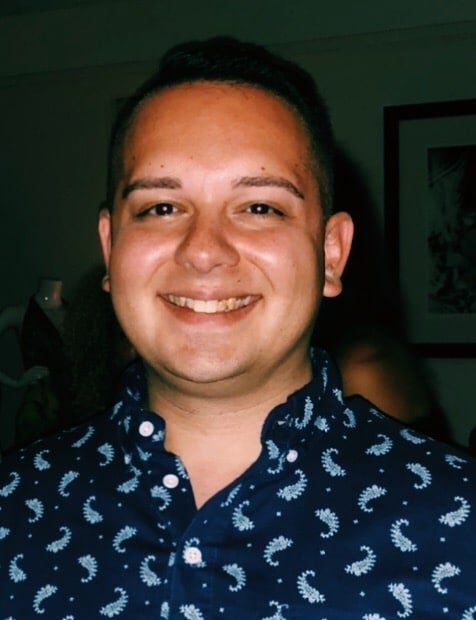A voice is uncovered—not manufactured. It takes a deep sense of self and hard work to consciously become the very person you’re meant to be. But once uncovered, it’s something to celebrate—especially with others. Because when others can see themselves in you, their voices are enabled too. Building communities and connecting these voices lays the groundwork for empowered generations to come.
In honor of Black History Month, we are amplifying the stories of two influential Black women—Hayet Rida and Dr. Ijeoma Kola—who are using their voices to build a world where becoming the best version of yourself is always possible. Through cherished narratives and an honest approach to storytelling, influencer and creative strategist Hayet Rida is imparting a much needed perspective that lends a new voice to the influencer landscape. Historian and content creator Dr. Ijeoma Kola is a champion for Black women’s health, education, and empowerment, who combined her love for learning with education and mentorship, to inspire the next generation of multi-hyphenate scholars and creators.
As a result, their communities have catalyzed opportunities for future change makers to share their truth and rise to their potential as leaders and creators. Ahead, the two dynamic voices share how they create environments that foster meaningful growth, moments that have impacted their purpose, and advice for women pursuing their dreams.
Dr. Ijeoma Kola
You’re the Founder of Cohort Sistas, a digital non profit supporting and empowering Black women who are pursuing doctoral degrees. What was the lightbulb moment for Cohort Sistas and why was it important to create a digital community?
I started playing with the idea of starting a digital community for Black women pursuing doctoral degrees at the start of the summer of 2020. I was one year post-PhD, and finally had enough distance from it that I was able to think more clearly about the challenges of my PhD program and how I could make the process easier for anyone else who decided to pursue that journey. Ultimately, it was a close relationship with one of my friends who also completed her doctoral degree in 2019 that helped me push through. We wrote together each week, held each other accountable, encouraged one another when we each wanted to quit, and were able to talk openly about the fact that institutions of higher education were not created for people who looked like us. Once the pandemic hit and people started having these conversations about police brutality and systematic racism, my first thought was oh my goodness, Black women who were already one of the few or the only in their doctoral program, who had already been dealing with racism and microaggressions in and outside of the classroom, would now have to try to create bonds with their classmates over Zoom?! I had spent the past ten years building a robust digital community through my blog, so I figured I could apply the concept of digital communities to support Black women pursuing doctoral degrees in this moment when they needed it the most. And Cohort Sistas was born.
As a historian, postdoctoral research fellow, and a champion for Black women’s health and education, can you share an experience that stands out highlighting the lack of infrastructure to support Black women in pursuit of doctoral degrees?
There’s so much data about the lack of mentorship, resources, and community for Black women pursuing doctoral degrees — on average, we take longer to finish, accrue more debt, and are less likely to find employment in academic spaces than our white counterparts. Because I held an external fellowship and had income from my blog to support my studies, I didn’t struggle financially through my doctoral program in the way that many people do. But I could have easily been someone who spent 8, 9, or even 10 years working on my degree, because I didn’t have enough mentorship and guidance during my program. But beyond finances and mentorship there was never a concern for how racial injustice could impact my performance as a student. In my second year, I took an incomplete in a class because I was physically unable to bring my fingers to type my final paper about bioethics after a grand jury chose not to indict the police officers who killed Michael Brown. My professor at the time didn’t care why I was unable to finish my paper. He didn’t ask about how I was doing or how that egregious example of injustice made me unable to write about justice in this class. He just gave me an incomplete and gave me a deadline by when I had to submit the paper so that I could get credit for the course. To him, justice was a theoretical issue, but for me, it was a real life issue.
The Cohort Sistas community has over 2,000 Black women representing 40+ countries across a wide variety of academic disciplines. What have you learned from the women in your community?
I already knew Black women were resilient because hello, we’re still here despite it all, but there are Cohort Sistas who are working full time and doing their doctorate and they’ve got kids and they’re publishing papers and they’re still making time for their friendships and personal well-being. And everyone is driven by a true passion to use their research and scholarship to make a difference in their communities and the world — because let’s face it, nobody gets a doctoral degree for the money. The Cohort Sistas community has brought me so much joy and hope, and they’ve taught me the power of the combination of passion and grit.
Your community—both online and off—spans different cultures, time zones, and areas of academic expertise. How do you create an environment that fosters meaningful connections?
The first step was creating a community that did not live on a social media platform. As much as social media can be a tool for connection, it's hard to form real, meaningful bonds with people in the midst of all the distractions of memes, ads, and videos. We have a special members-only platform, which will hopefully grow to a standalone app soon, and the community culture is based on some of my personal values: transparency and respect. We encourage people to be their full selves in Cohort Sistas, especially because we often have to be incredibly buttoned up in academic spaces since any of our shortcomings can be and often are projected onto our entire community. We have just as many social events as we do professional development events, and our mentorship program is a small group model to encourage people to create small tight-knit relationships. Community and connection is at the heart of what Cohort Sistas does, and without it, we would just be another professional development program. Meaningful connections to support Black women and non-binary people through graduate school was always the goal.
Your impact as a mentor is undeniable—who made the biggest impact on your own growth and development?
I’m going to have to shout out two people. My mom was such an amazing example of a woman who chased her dreams, did things her own way in spite of what her family or friends thought (which came back to bite her when I decided to follow in her footsteps!), and truly lived in service to others, without losing herself. She undoubtedly shaped who I am as a person, mom, wife, and leader. Secondly, I have to recognize one of my mentors, Dr. LaShawnDa Pittman. For the past year, she has been the wise and witty Black woman professor that I needed to help guide me ten years ago when I started my PhD. Since meeting her, she has equipped me with so much confidence in my own navigation of academic spaces, and she encourages me to continue doing the work of Cohort Sistas by affirming its importance. She’s an example that I’ve never had until now — a Black woman who is carving out her own lane in academia without thinking it’s the end all be all of her life. She’s basically my academic fairy godmother!
Outside of academia, you’re a seasoned content creator who uses compelling storytelling and imagery to create joyful and relatable lifestyle content. What inspires you?
My name inspires me! In the Igbo language of southeastern Nigeria, Ijeoma means travel well or safe journey. I had people call me by a nickname up until I finished college, but something about turning 21 created this urgency in me to really embrace my name and start enjoying my life journey. I was the kind of person who had a meticulous 10-year plan, but all that went out the window when a long-term relationship ended in college and I decided to forego my childhood dream of becoming a medical doctor. So I decided to just live and trust that God would figure it out so that I didn’t have to. I first started documenting my journey of learning to care for my natural hair, and then I just started sharing and capturing different parts of my life as I matured and developed. I’m constantly exploring, trying out, and learning new things. If you follow me long enough you’ll see I’m the queen of the pivot — I’m really into sharing tales of motherhood one second and the next I’m teaching myself how to renovate a house, because why not?!
What’s the number one piece of advice you have for women pursuing higher education?
You don’t have to do it alone. You need people beside you, who are going through the doctoral journey with you and know exactly what you’re dealing with. You need people ahead of you, to provide mentorship and guide you along your journey. And you need people behind you, who have no idea what the heck you’re doing, don’t understand your research or why you have to spend 15 hours reading for class or running experiments, but who will continue to push and encourage you. Find your people, and you will be able to make it through, even when it seems impossible.
Hayet Rida
You’re the founder of Hayet Rida, a lifestyle blog created as a self love haven. What inspired you to create this radically inclusive space and why do you think it resonated with so many people?
My favorite quote is you cannot heal what you don't reveal. Which is from Jay-Z, in case anyone wants to know. I've always believed in the power of telling my story no matter how imperfect it is because when people see themselves in you, they have permission to be who they are no matter if it's for one day.
You have this undeniable ability to connect with your community through personal anecdotes and inspiring messages of self love—and awareness. How do you create an environment that fosters meaningful connections?
The best part about fostering meaningful connections is that you don't have to try. The power comes from telling your real story without shame.
You’ve paved a wide path for women to own their truth as creators. Can you share a challenge you had to overcome when championing this path that speaks to your experience as a Black woman?
So many times you are up against who trends say you should be and who you know you should be. So there were many times where I got caught up in the "grow your following, do what your audience wants to see, make all the money", but I had to make those mistakes to realize it wasn't worth it. Which is why I continue to encourage women that you do not have to create a life, the one you have is always enough.
You encourage the idea of seizing and accepting the ups and downs of personal discovery, reminding others that “each time you think you have found yourself, the journey only begins again.” Who has made the biggest impact on your journey?
Myself. I have overcome so much, and oftentimes I will look back and be amazed at what happened when I embrace failure instead of escaping it.
Along with offering gracious advice to those who may be struggling, you’re a dedicated mentor through your influencer learning platform—The Rida Collective. What have you learned from your community?
The best thing I have learned from my community is that so many women have stories and experiences that the world deserves to hear but they get caught up in always double guessing if their story is worth sharing. And they remind me to continue to unapologetically share mine.
You opened up to your audience about rebirth, and how you often like to re-introduce yourself to yourself as an exercise to remain present and aware of who you’re becoming. Have you ever uncovered something unexpected that led to growth or an increased sense of purpose?
Over the last couple of years, I have found myself in many medical situations that put you on a surgeon's table about to be put to sleep for surgery. There is a magic in those moments where you promise yourself that if your eyes open, you will live more urgently. That always drives my purpose.
Outside of content creation you founded Aiya Candle Co and The Rida Book Co. brands that both build on your message of authenticity and celebrate the trust in oneself to make your dreams a reality. What advice can you share for women on cultivating the confidence to go after their dreams?
I think the most important message is to realize that confidence isn't like filling your fuel tank to get you through, it is a muscle you build as you go. It's not about waiting till you have the confidence, or the time, or the patience. It's about taking the leap , knowing that failure is your fuel.










